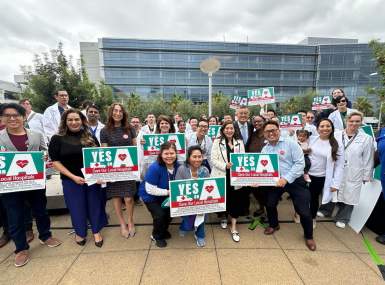HHS announces $4 billion in additional relief to health care providers impacted by COVID-19
Author

Blaire Bryant
Upcoming Events
Related News

Key Takeaways
On July 10, the U.S. Department of Health and Human Services (HHS) Health Resources and Services Administration (HRSA) announced it will disburse an additional $4 billion in relief for health care providers hit hard by the COVID-19 pandemic. Funds will be drawn from the Provider Relief Fund, a $175 billion pot funded across previous COVID-19 relief packages, including the CARES Act (P.L. 116-136) and the Paycheck Protection Program and Health Care Enhancement Act (P.L. 116-139).
Of the $4 billion, HHS will direct approximately $3 billion to hospitals that serve a large percentage of vulnerable residents and that are operating on thin financial margins. HHS previously allocated $10 billion in funds to safety-net hospitals last month; however, some hospitals were not eligible for that support according to the profitability threshold requirements under the initial funding disbursement. As part of the new funding allocation, HHS will expand the criterion for payment qualifications to allow for disbursements to 215 acute care hospitals meeting the revised profitability threshold.
On top of the $3 billion for safety-net hospitals, HHS is expanding its current rural hospital payment formula to allocate an additional $1 billion to urban hospitals with special rural Medicare designations and to suburban hospitals that serve rural populations. HHS estimates the $1 billion in new funding will reach 500 additional hospitals with relief payments ranging from $100,000 to $4,500,000 for rural designated providers and $100,000 to $2,000,000 for the other providers.
In addition to funding increases for safety-net and rural health care providers, HHS also announced that dentists can now apply for funding under the Provider Relief Fund. Eligible dentists would receive a reimbursement of two percent of their annual reported patient revenue and have until July 24, 2020 to apply for funding through the Enhanced Provider Relief Fund Payment Portal.
Across the country, counties support nearly 1,000 hospitals, make key financial contributions to the Medicaid program, and plan and operate community-based services for persons with mental illness and substance abuse conditions through 750 behavioral health authorities. Given these investments, NACo has advocated for direct allocations to county-owned health care providers from the Provider Relief Fund and will continue to track progress on the distribution of these funds.
For additional information, please see the following links:
- State, local governments urge enhanced federal health care match during COVID-19 pandemic (NACo press release)
- HHS announces release of $35 billion in COVID-19 relief to Medicaid and CHIP providers (NACo blog)
- HHS announces over $4 billion in additional relief payments to health care providers impacted by the coronavirus pandemic (Press release from the U.S. Department of Health and Human Services)
- Enhanced Provider Relief Portal (Press release from the U.S. Department of Health and Human Services)

Attachments
Related News

CMS issues new guidance on Medicaid Community Engagement Requirements
On December 8, the Centers for Medicare & Medicaid Services (CMS) released a Medicaid and CHIP Services Informational Bulletin (CIB) directing states on how to implement the Medicaid community engagement requirements enacted under Section 71119 of the One Big Beautiful Bill Act legislation (Public Law 119-21), or H.R. 1.

California county sales tax measure backfills federal healthcare cuts
Santa Clara County, Calif. will raise an estimated $330 million each year from a sales tax to backfill lose Medicaid funding.
